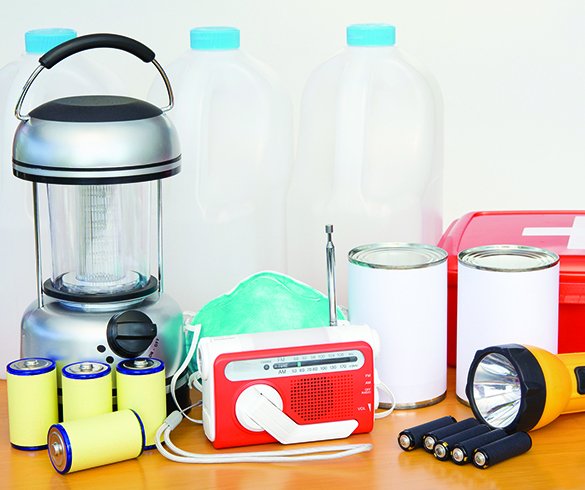
Building an Emergency Kit with Disability in Mind
Creating a supply kit is part of being prepared for emergencies and disasters. Kits should include basic survival items but also things specific to your needs. Kits can have equipment to help with communication, things that reduce stress and more.
If you have a disability or health condition, your planning may be more complex. Consider these ideas from the Administration for Community Living while building your kit:
Basic Supplies
- At least a three-day supply of water (1 gallon per person per day) and non-perishable food
- Manual can opener
- Flashlight
- Battery-powered or hand-crank radio
- Extra batteries
- Cell phone with chargers and backup battery
- First-aid kit
- Whistle or other help signal
- Matches in waterproof container
- Dust mask for contaminated air
- Two cloth face coverings for each person at least 2 years old
- Sleeping bag or blanket
- Complete change of clothing
- Personal hygiene items
- Prescription and over-the-counter medicines
- Eyeglasses or contacts
- Garbage bags
- Duct tape
- Local maps
- Pen and paper
- Cash
Documentation
- Important documents (electronic or copies) such as insurance cards
- List of all medications, dosages and allergies
- List of assistive technology or other equipment, including brand, model, instructions and where the equipment came from
- Contact information for health providers, caregivers and relatives
Vision, Hearing and Speech Items
- Braille or large-print labels for supplies
- Weather radio with text, shaking and flashing alerts
- Extra hearing aid batteries
- Communication equipment
- Backup communication options such as laminated cards or pictograms
Mobility Considerations
- Information on size and weight of wheelchair
- Extra batteries for equipment
- Lightweight manual wheelchair if usual chair is powered
- Spare low-tech mobility devices such as a cane or walker
- Portable air pump and tire patch kit
- Work gloves
- Extra seat cushions and other medical items
Sensory Sensitivities
- Handheld electronic devices with movies and games saved locally
- Spare chargers and batteries
- Sheets and twine, small popup tent or other privacy devices
- Sensory dampeners such as headphones, weighted vests, sunglasses and nose plugs
- Comfort items like snacks, clothing and aromas
Service Animal Supplies
- A three-day supply of food and water
- Medications
- Animal first-aid kit
- Proof of vaccinations and registration
- A picture of you and your animal together to prove ownership
- Collar or harness with ID and rabies tags
- Microchip information
- Leash
- Crate or carrier
- Sanitation items
- Familiar items like toys and bedding
Visit ACL.gov/emergencypreparedness for more tools and information.

Source:
Administration for Community Living



























